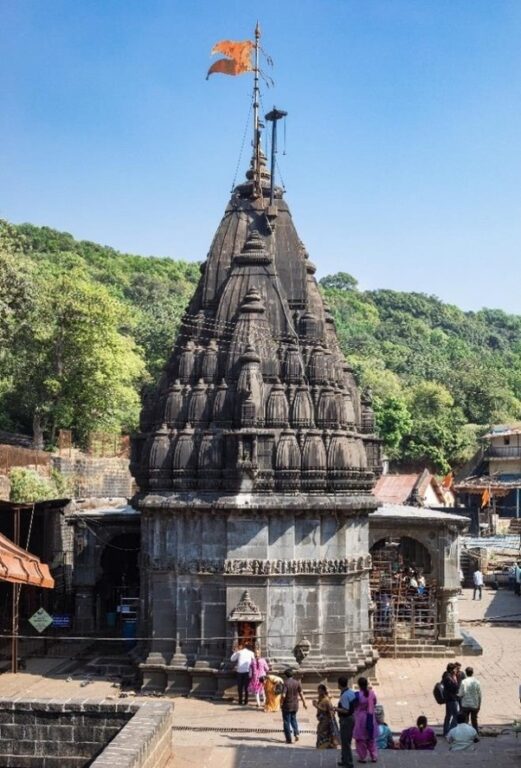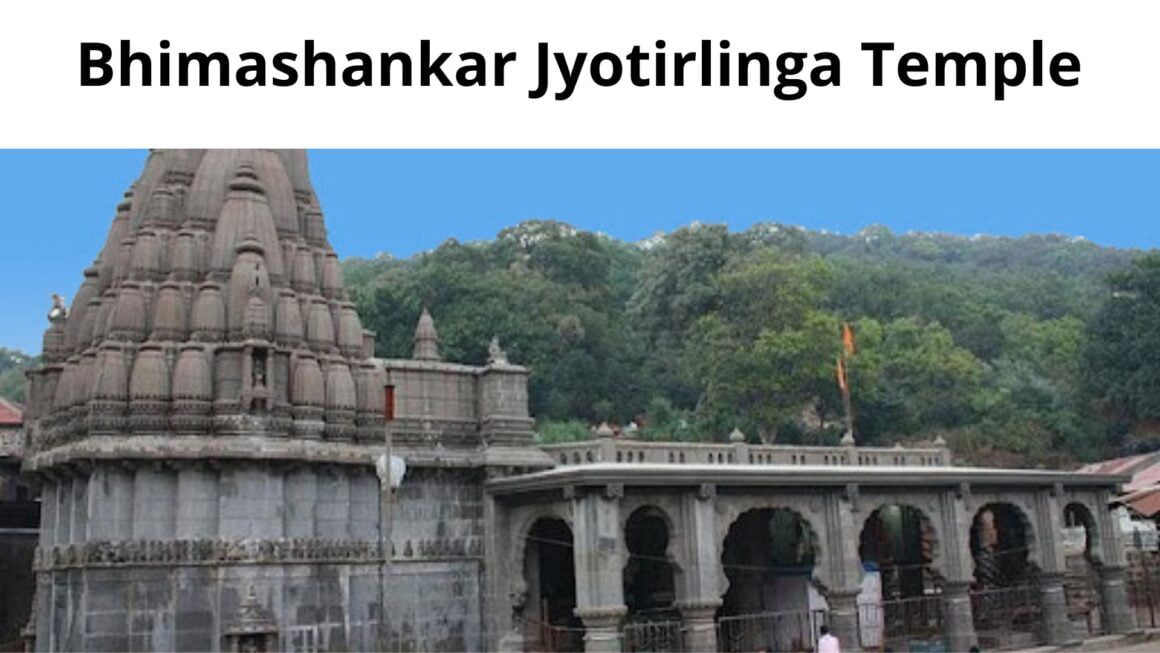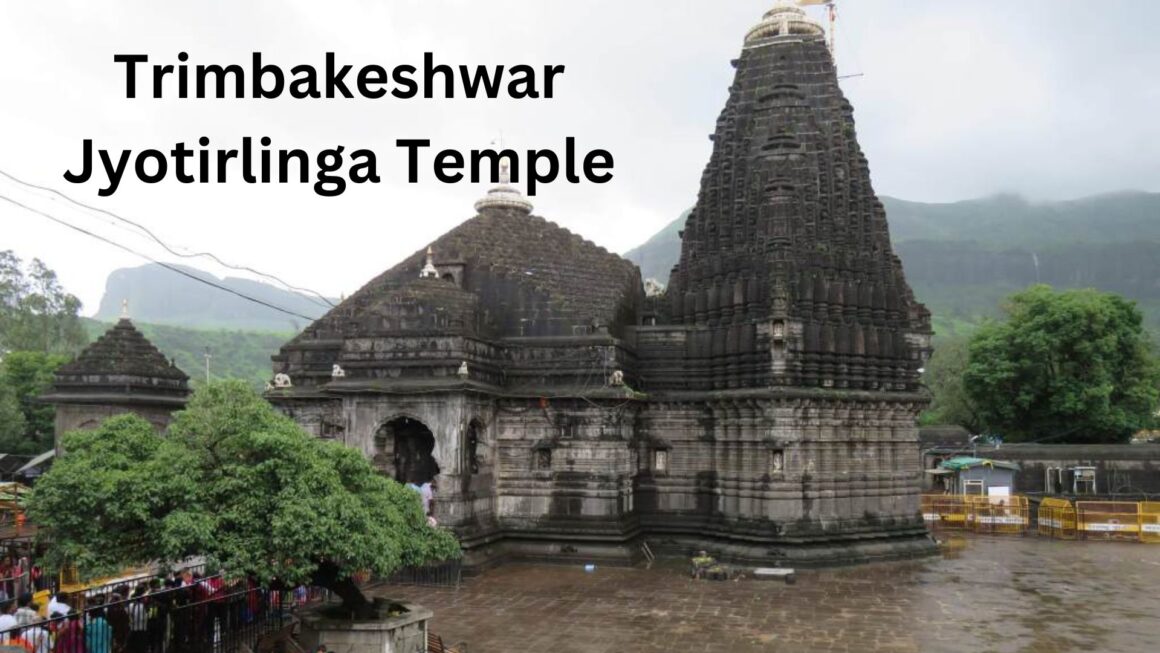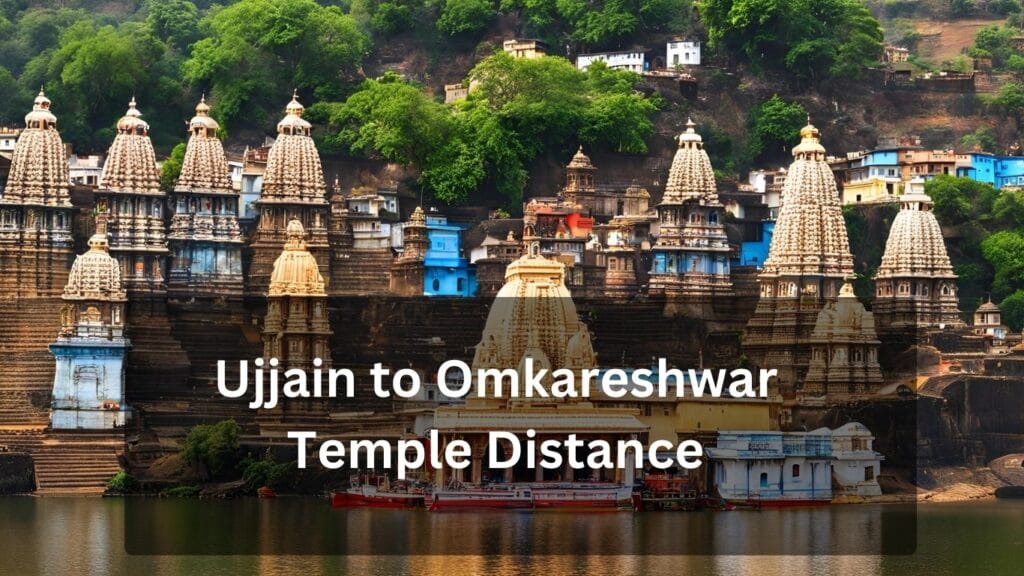Introduction to Bhimashankar Jyotirlinga Temple
The Bhimashankar Jyotirlinga Temple in Maharashtra is a revered site in Hindu mythology, dedicated to Lord Shiva. Situated in the village of Bhorgiri, this temple is part of the 12 Jyotirlingas, believed to be self-manifested representations of Lord Shiva’s divine form. The temple’s history intertwines with Hindu legends, like the birth of the Bhima River during a conflict between Lord Shiva and the demon Tripurasura, giving rise to its name and sacred location. Devotees visit seeking blessings, spiritual enlightenment, and purification of their souls, believing prayers and rituals here bring peace, prosperity, and spiritual upliftment.
Bhimashankar Jyotirlinga Temple, located in Maharashtra, is a significant pilgrimage site and a serene escape into nature’s beauty. It houses the sixth Jyotirlinga among the 12 self-emanated Jyotirlingas of Lord Shiva.
Place Located
Bhimashankar Jyotirlinga Temple Situated in the village of Bhorgiri, about 125 km from Pune, Maharashtra, India, in the Sahyadri Mountains’ Ghat region. The temple is where the Bhima river originates before merging with the Krishna River.
History of Bhimashankar Jyotirlinga Temple

The Bhimashankar Jyotirlinga Temple in Maharashtra has a rich history steeped in Hindu mythology and spiritual significance. Legends associated with the temple narrate stories of divine manifestations and battles against demonic forces, shaping its sacred legacy.
One such legend involves the birth of the Bhima River during a conflict between Lord Shiva and the demon Tripurasura, leading to the temple’s establishment and its name.
The temple’s architecture, blending Indo-Aryan and Nagara styles, showcases intricate carvings, colossal pillars, and a sanctum housing the sacred Jyotirlinga at its center.
Devotees visit this temple seeking blessings, spiritual enlightenment, and purification of their souls, believing that prayers and rituals here can bring peace, prosperity, and spiritual upliftment.
The serene ambiance of the temple, surrounded by lush forests and the Bhima River, enhances the spiritual experience for visitors, fostering a deep connection with the divine.
Special Features of Bhimashankar Jyotirlinga Temple
The temple showcases a blend of ancient and modern Nagara architectural styles.
Intricate carvings adorn the walls and pillars, depicting divine figures and mythological scenes.
A shrine for Lord Shaneeshwara and a statue of Nandi are present within the temple premises.
Story Behind of Bhimashankar Jyotirlinga Temple
Legends narrate tales of divine interventions by Lord Shiva to protect devotees and restore peace in the region, leading to the establishment of the Jyotirlinga at Bhimashankar.
Best time to visit Bhimashankar Jyotirlinga Temple
The best time to visit the Bhimashankar Jyotirlinga Temple in Maharashtra depends on personal preferences and the type of experience one seeks. Here are some recommendations based on the seasons:
Summer Season (March to May): The summer season at Bhimashankar experiences high temperatures ranging from 23°C to 37°C, making trekking a bit more challenging. However, travelers can still explore the area and enjoy other nearby attractions. This period also offers exceptionally low hotel rates for budget-conscious travelers.
Monsoon Season (June to September): The monsoon season, starting in June, brings comfortable temperatures and lush greenery to Bhimashankar. This time is ideal for visiting the wildlife sanctuary and enjoying the natural beauty of the region. The sanctuary is teeming with jamun and mango trees during this season, offering a refreshing experience.
Winter Season (October to February): Winter is considered a joyous time to visit Bhimashankar, with maximum temperatures around 30°C and minimum temperatures of 13°C. The clear skies make it perfect for outdoor activities, trekking along well-marked routes with rivulets, waterfalls, cliffs, and boulders. Winter is also ideal for spotting a variety of creatures in the sanctuary and enjoying family picnics at sites like Hanuman Lake.
While there is no set optimum month to visit Bhimashankar Temple, considering personal interests and physical capabilities can help determine the best time for a fulfilling experience at this sacred site.
How to Reach Bhimashankar Jyotirlinga Temple
To reach the Bhimashankar Jyotirlinga Temple in Maharashtra, you can consider the following transportation options:
By Road: The temple is well-connected by road. You can reach the temple by bus, private car, or taxi. The temple is located in the village of Bhorgiri in the Pune district of Maharashtra, making it accessible by road from nearby towns and cities.
By Train: The nearest major railway station to Bhimashankar is Pune Railway Station, which is approximately 111 km away. From Pune, you can hire a taxi or take a bus to reach the temple.
By Air: The nearest airport to Bhimashankar is Pune Airport. From the airport, you can hire a taxi or take a bus to reach the temple.
These transportation options provide convenient ways to access the sacred Bhimashankar Jyotirlinga Temple for devotees and travelers seeking spiritual experiences in Maharashtra.
Nearby Places
Surrounded by lush greenery and mountains, nearby attractions include Mokshakund Teertha, Saravateerth, Kusharanya Teertha, and Jyanakunda ponds.
In conclusion
Bhimashankar Jyotirlinga Temple stands as a symbol of faith, architectural brilliance, and natural beauty intertwined with rich mythological significance.




